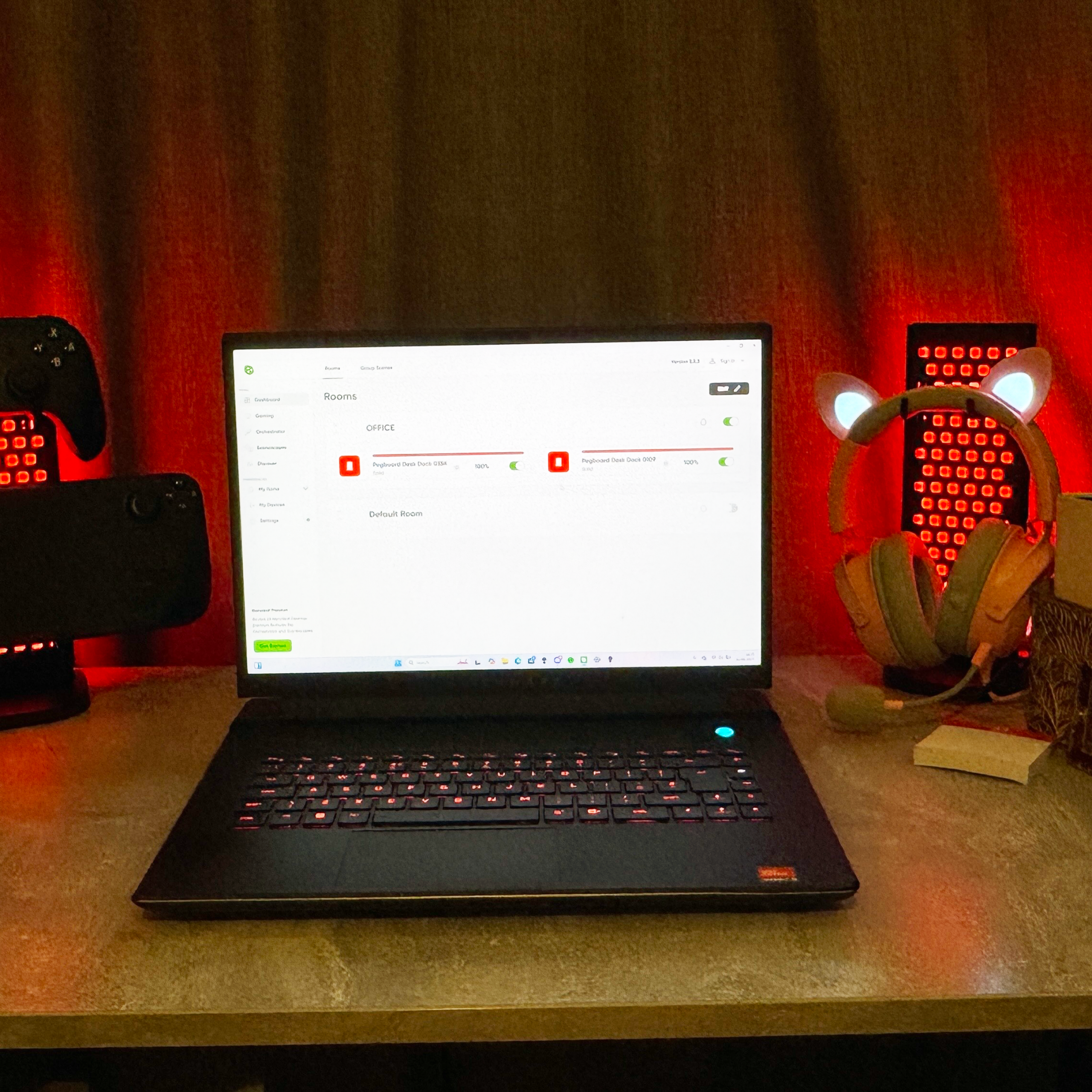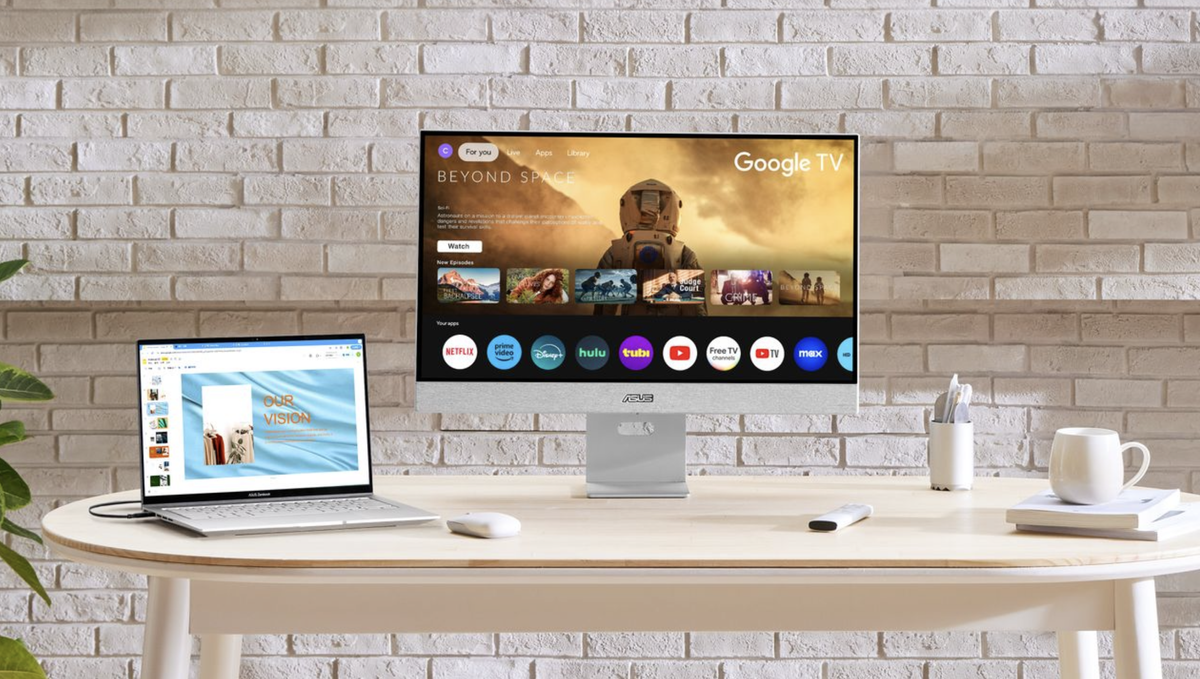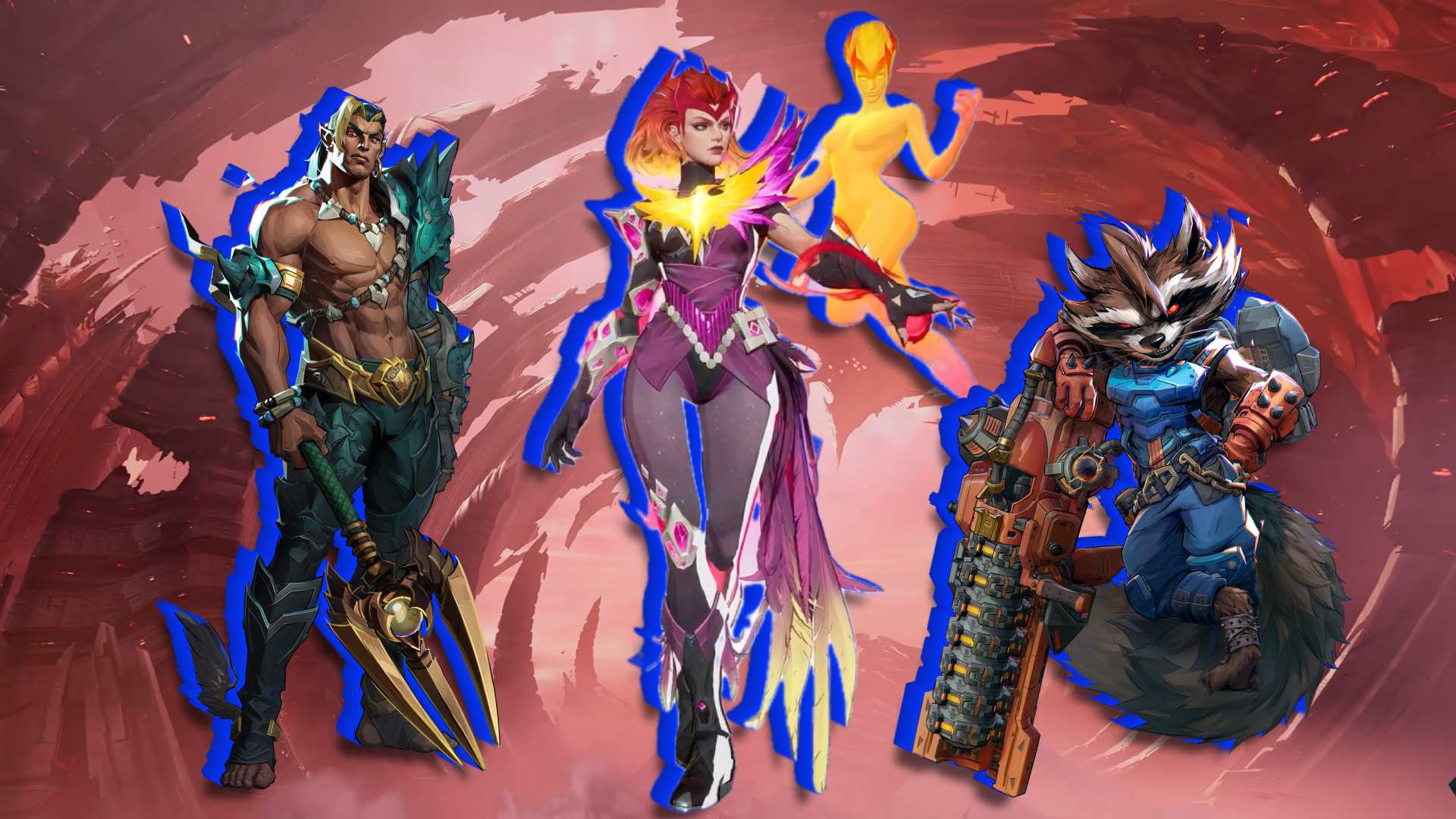I would not call me a striking person, but when it comes to intelligent lighting, I am prepared to do everything possible. In my house, I am using everything from standing lamps such as the PHILIPS HUG gradient lamp and the TV bottom light to the Govee 2 table lamp to give my home a little pizza lighting.
Until recently, my configuration included my beloved Hexagon Nanoleaf Black Hexagon wall panels, which served as traditional and immersive intelligent lighting when it connected to my PC through the Nanoleaf desktop application, in addition to the remote controls offered by the mobile application. Unfortunately, my new excavations do not allow me the wall space for them, so I was excited to see if the last launch of Nanolef games, the Dock Pegboard Desk, would properly fill the empty in the form of RGB in my life.
Would it be so simple?
I don't stop you as a resignation
I am in the midst of reviewing the Nanolef's Peckle desktop dock, so it is far from being a final verdict, but my first impressions tell a warning story for all immersive lighting enthusiasts. This desktop and intelligent light combo 3 in 1 is an incredible concept; Designed intelligently, arriving with four hooks each, which can be organized on the plug board to hold their game controllers, hand PC and headphones. If you prefer to have the plug board as a screen piece, you can easily remove it from the base and turn it to show the rear light panel.
For me, this was a dream product. I am always looking for ways to optimize the space of my desk, especially because I reduced me when I moved home, and I love the widest range of Nanoleof's smart lights.
So, after unlawling and configuring my new lights, I was anxious to see my new configuration throughout its glory. Simply see the lights by bicycle through the colors of the rainbow before they had matched them with the Nanoleaf software was exciting enough.
However, unlike many other Nanolef products, the plug board cannot be added to the Nanolef mobile application; It works exclusively within the Nanolef Desktop application, and that is where my first problem entered.
While the basic configuration of the lights worked well when it was not matched, as soon as I connected them to the application and tried to change their color exit, they stopped working, intermitting and extinguishing sporadically, rejecting any peripheral that connected to the base and appeared intermittently as “unattainable” inside the Nanoleaf application.
I thought it was because they needed more power, so I connected my power supply; Mirthless. The software also offers little problem solving for the problem, and with everything it is executed without problems to the point that I tried to match them, I was short trying to solve them myself. I still have to contact Nanoleof about the problem, which I will surely do before giving my final verdict, and I am more than sure that there is a resolution; However, my experience paints a broader image of immersive challenges of intelligent home lighting.
Bigger fish to fry
I do not enjoy regretting the unfortunate state of intelligent interoperability for the home once more. The simple fact is that it is of all greater problem, and that is not exclusive to intelligent home lighting; Any intelligent house brand that adopts the walled garden approach, of which there are many, wins my anger in the compatibility of the age era.
Game lights, in particular, suffer. On my gaming portable computer, I have a lot of RGB and Smart Light light control applications; Logitech G Hub, Hyperx Ngenuit, Corsair Icue, Razer Chroma and Nanoleaf are the ones I used for this configuration.
Now, some of these play well among them; Namely, Nanoleof is linked to Corsair Icue and Razer Chroma, but that still leaves half of my disconnected peripheral configuration. It is also at the mercy of software updates, which, especially if you use a hub application with multiple platforms connected to it, can make or break its configuration.
There is also the non -small problem of software itself. Executing these background applications, especially if No Able to reduce them by integrating different platforms, you can use some CPU and RAM. Especially if you are playing in a lighter machine, that can end up being quite detrimental to high -risk games.
However, not all hope is lost when it is immersive intelligent lighting. Software such as SignalrGB and OpenRGB greatly contributes to mitigating compatibility problems, even if these are far from being perfect. Even so, things are directed in the right direction, only at a glacial rhythm, and if intelligent light manufacturers want to illuminate the life of players around the world, that will have to change to keep up with the sophisticated interfaces and experiences for our technology.
Even when it comes to immersive lighting for television, you can bet that things are never simple. The lighting that extends the screen is increasingly popular, however, its options these days are limited; It excavates in an expensive PHILIPS Ambilight TV, opt for the still private tone and synchronization (which requires HDMI entry and, therefore, will not work with cable TV or intelligent television software incorporated) or opt for a product like Nanolef 4D or Govee Ambient TV Backlight, which indicates a camera on its screen on its screen on its screen to detect the action, It will invariar some small tickets.
My best advice? Stay with so many products from a possible light manufacturer, and for PC games, that, in all likelihood, will be a manufacturer of peripherals with more focus on RGB than in the intelligent lighting of everything.
Do you want to start your own smart lighting configuration? Buy my favorites below!









